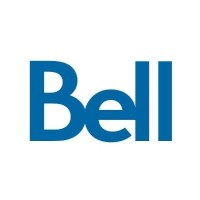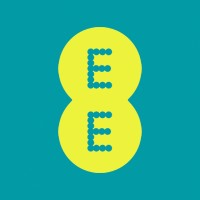Company Cyber Security Posture
NANA
NA Company Details
NA
NA
NA
NA
NA
NA
Scan still pending
NA
NA
Between 200 and 800
This score is AI-generated and less favored by cyber insurers, who prefer the TPRM score.
 NA Global Score
NA Global Score.png)

Company Scoring based on AI Models
| Model Name | Date | Description | Current Score Difference | Score |
|---|---|---|---|---|
| AVERAGE-Industry | 03-12-2025 | This score represents the average cybersecurity rating of companies already scanned within the same industry. It provides a benchmark to compare an individual company's security posture against its industry peers. | N/A | Between 200 and 800 |
Company Cyber Security News & History
| Entity | Type | Severity | Impact | Seen | Url ID | Details | View |
|---|
Company Subsidiaries

NA
Access Data Using Our API

Get company history
.png)
NA Cyber Security News
MDI Ventures Invests in CYFIRMA, Seek to Enhance SEA’s Cyber Security
CYFIRMA combines cyber-intelligence with attack surface discovery and digital risk protection to deliver early warning, personalized, contextual ...
Indosat and Cisco to boost cybersecurity for Indonesian enterprises
The Cybersecurity Readiness Index also found that 97% of Indonesian companies cite critical talent shortages as a barrier to improving ...
CYFIRMA secures strategic investment from MDI Ventures to bolster cybersecurity in Southeast Asia
CYFIRMA's core business revolves around combining cyber intelligence with attack surface discovery and digital risk protection. This synergy ...
Indonesia Cybersecurity Job Market: Trends and Growth Areas for 2024
Explore Indonesia's cybersecurity job market and discover key trends, high-demand roles, and growth areas for 2024. Kickstart your career in ...
Telkom Indonesia boosts its cybersecurity portfolio with F5
“The strategic partnership with F5 fortifies Telkom Group's capabilities as the top digital telco in Indonesia, with a special focus on ...
Telkom strengthens cyber security with F5
The Telkom-F5 strategic partnership is the reinforcement for Telkom Group's capabilities as Indonesia's preferred digital telco, specifically in cyber security.
Telkom Indonesia to turn subsea cables into earthquake detectors
Telkom Indonesia announced on Friday it is collaborating with Gadjah Mada University (UGM) to develop an earthquake detection system.
Top 10 Essential Tech Skills Indonesia Employers Seek in 2024
Indonesia's tech industry is booming, with the digital economy expected to grow to $365 billion by 2030. Essential tech skills in 2024 include ...
Indonesia Tech Ministry Official Quits After June Cyber Attack
An official of Indonesia's information technology ministry resigned as the government continues an audit of its data centers in the wake of ...

NA Similar Companies

Telkom Business
Telkom Business is the business unit dedicated to serving businesses of every type, industry and size in and outside South Africa. The businesses that we serve range from small and medium enterprises (SMEs) to large corporations, government organisations and global enterprises. A sub-brand of the

T-Mobile
T-Mobile US, Inc. (NASDAQ: TMUS) is America’s supercharged Un-carrier, delivering an advanced 4G LTE and transformative nationwide 5G network that will offer reliable connectivity for all. T-Mobile’s customers benefit from its unmatched combination of value and quality, unwavering obsession with off

vivo
vivo is a technology company that creates great products based on a design-driven value, with smart devices and intelligent services as its core. The company aims to build a bridge between humans and the digital world. Through unique creativity, vivo provides users with an increasingly convenient mo

Orascom Telecom
Orascom Telecom is a leading international telecommunications company operating GSM networks in high growth markets in the Middle East, Africa and Asia, having a total population under license of approximately 510 million with an average mobile telephony penetration of approximately 49% as of Decemb

Bell
Bell is Canada's largest communications company providing advanced Bell broadband wireless, Internet, TV, media and business communications services. Founded in Montréal in 1880, Bell is wholly owned by BCE Inc. To learn more, please visit Bell.ca or BCE.ca Through Bell for Better, we are investin

EE
EE, part of BT Group, is the largest and most advanced mobile communications company in the UK, delivering mobile and fixed communications services to consumers. We run the UK's biggest and fastest mobile network, having pioneered the UK's first superfast 4G mobile service in October 2012 and was

Frequently Asked Questions
Explore insights on cybersecurity incidents, risk posture, and Rankiteo's assessments.
NA CyberSecurity History Information
How many cyber incidents has NA faced?
Total Incidents: According to Rankiteo, NA has faced 0 incidents in the past.
What types of cybersecurity incidents have occurred at NA?
Incident Types: The types of cybersecurity incidents that have occurred include .
Additional Questions
What Do We Measure?
















Every week, Rankiteo analyzes billions of signals to give organizations a sharper, faster view of emerging risks. With deeper, more actionable intelligence at their fingertips, security teams can outpace threat actors, respond instantly to Zero-Day attacks, and dramatically shrink their risk exposure window.
These are some of the factors we use to calculate the overall score:
Identify exposed access points, detect misconfigured SSL certificates, and uncover vulnerabilities across the network infrastructure.
Gain visibility into the software components used within an organization to detect vulnerabilities, manage risk, and ensure supply chain security.
Monitor and manage all IT assets and their configurations to ensure accurate, real-time visibility across the company's technology environment.
Leverage real-time insights on active threats, malware campaigns, and emerging vulnerabilities to proactively defend against evolving cyberattacks.




